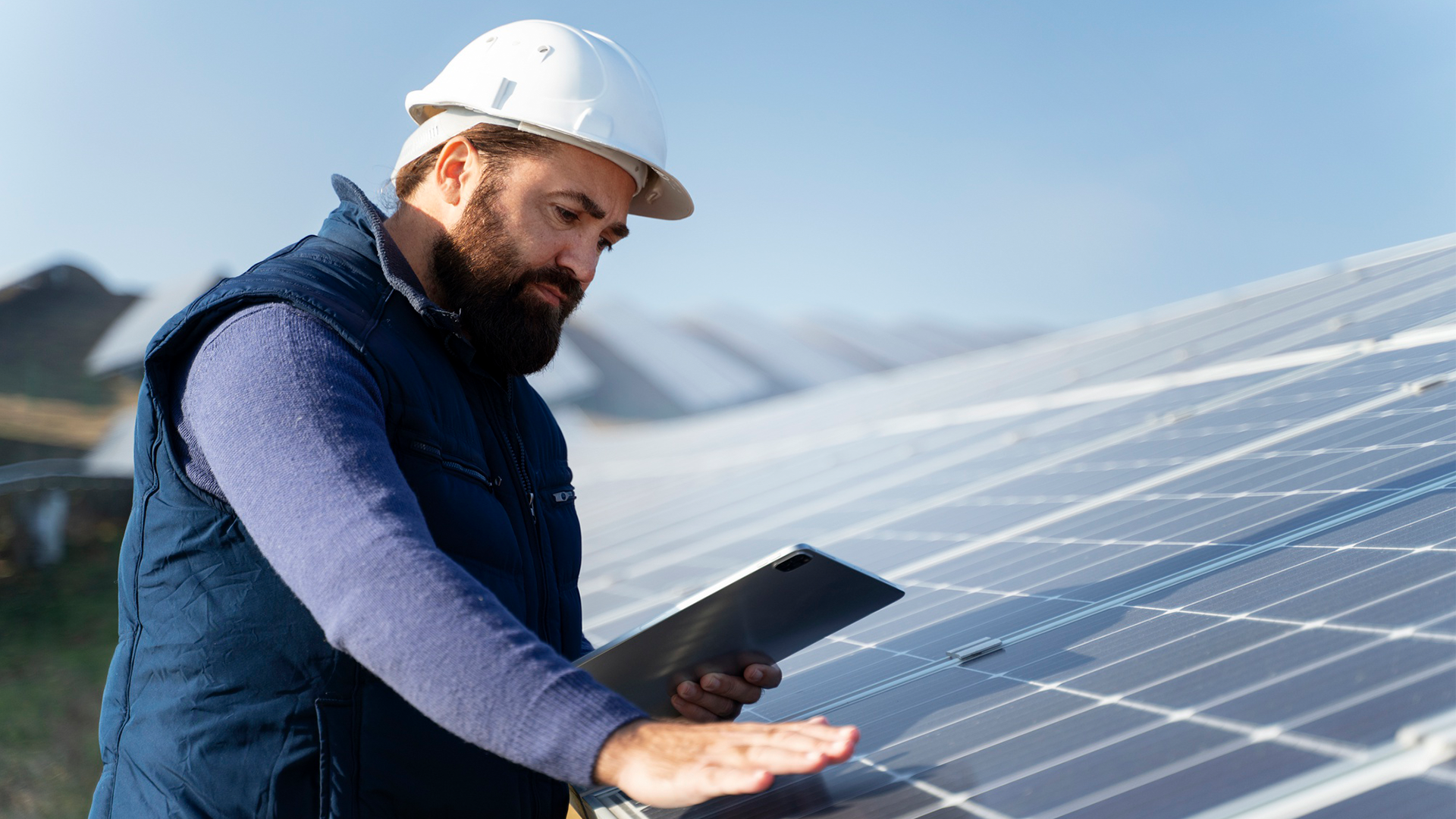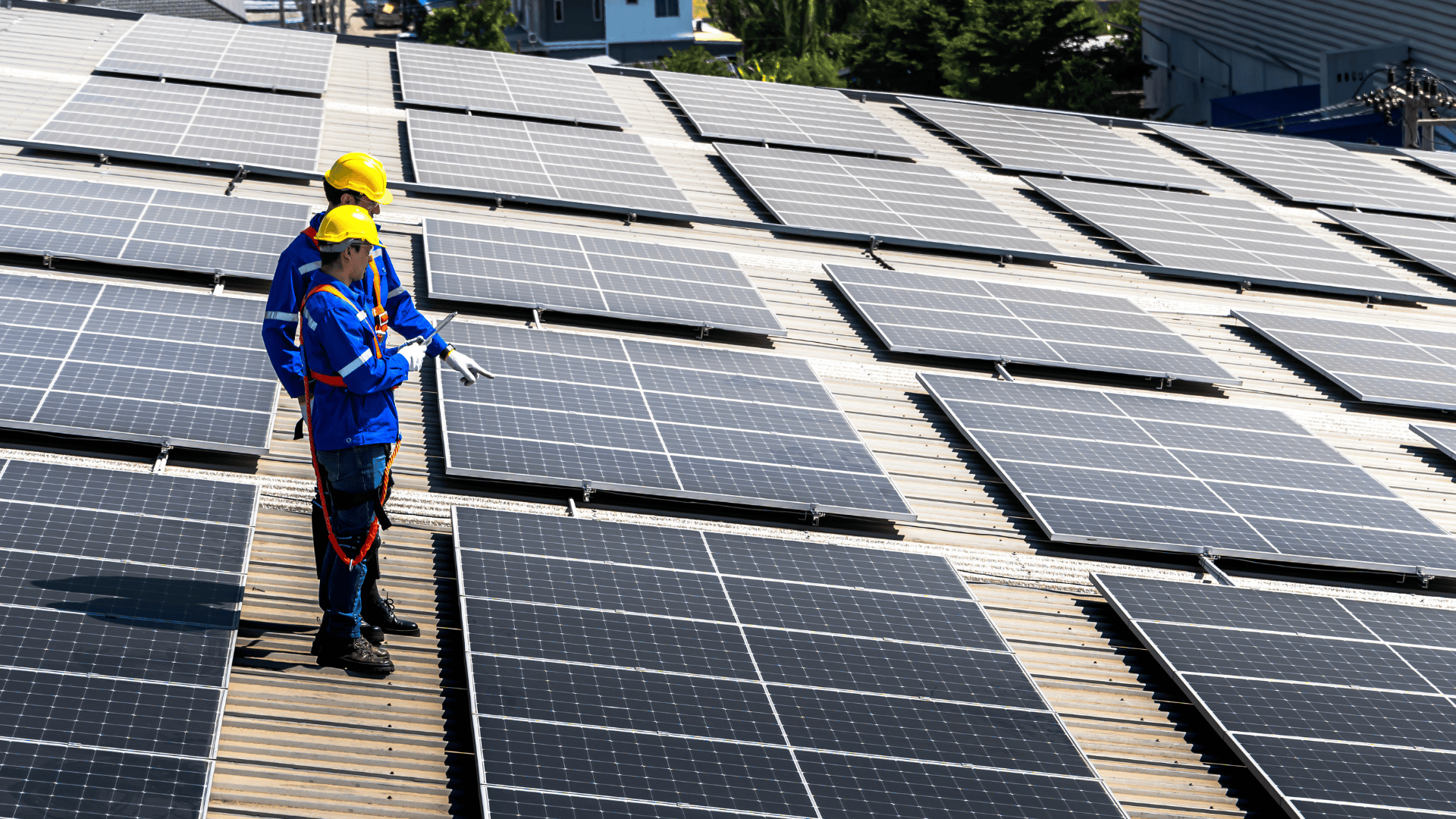August 6, 2024
Alert!!! A hurricane is bearing down on your city. Winds are howling, rain is pouring, streets are flooded, trees are uprooted, and power lines are down.
In such extreme weather, the stakes are high for the solar industry. A single event can cripple solar panels, disrupt data centers, and halt operations, leading to significant financial losses and damage beyond immediate repair bills, including lost revenue and diminished customer trust.
Extreme weather conditions have notably impacted the solar industry in the U.S. Over 70% of solar losses in the past decade occurred since 2017, largely due to increased severe weather events
Panic mode on right? Now imagine these conditions and your solar solution system is still working fine outside. This is possible through detection. As extreme weather becomes the new norm, detection is key to protecting your solar solution systems from nature’s damage. It’s not just about weathering the storm; it’s about thriving in a more unstable world.
Let's dive deeper!
Understanding Extreme Weather Risks and the risks associated with them
Extreme weather events are becoming more frequent and severe, presenting significant challenges to solar energy solutions and the broader energy sector. Let's see how various extreme weather conditions impact solar panel installations and their installation and associated risks:
1. Hurricanes
Hurricanes bring strong winds and heavy rain, calm turns to chaos as they hit everything in their path.
Associated Risks
Physical Damage: Hurricanes can tear apart solar panels and supporting structures, causing extensive damage. This can result in costly repairs and replacements, disrupting energy production.
Operational Downturn: Hurricanes can halt power generation, causing prolonged interruptions in the electricity supply and affecting energy availability.

The 2022 hurricane season led to extensive damage in Puerto Rico, where solar projects were severely affected, resulting in prolonged outages and estimated losses in energy production.
Reputation Damage: Frequent service disruptions during hurricanes can erode customer trust and damage your reputation.
Financial Losses: Repair costs and lost revenue can blow your budget like a stormy gale, impacting your electricity savings.
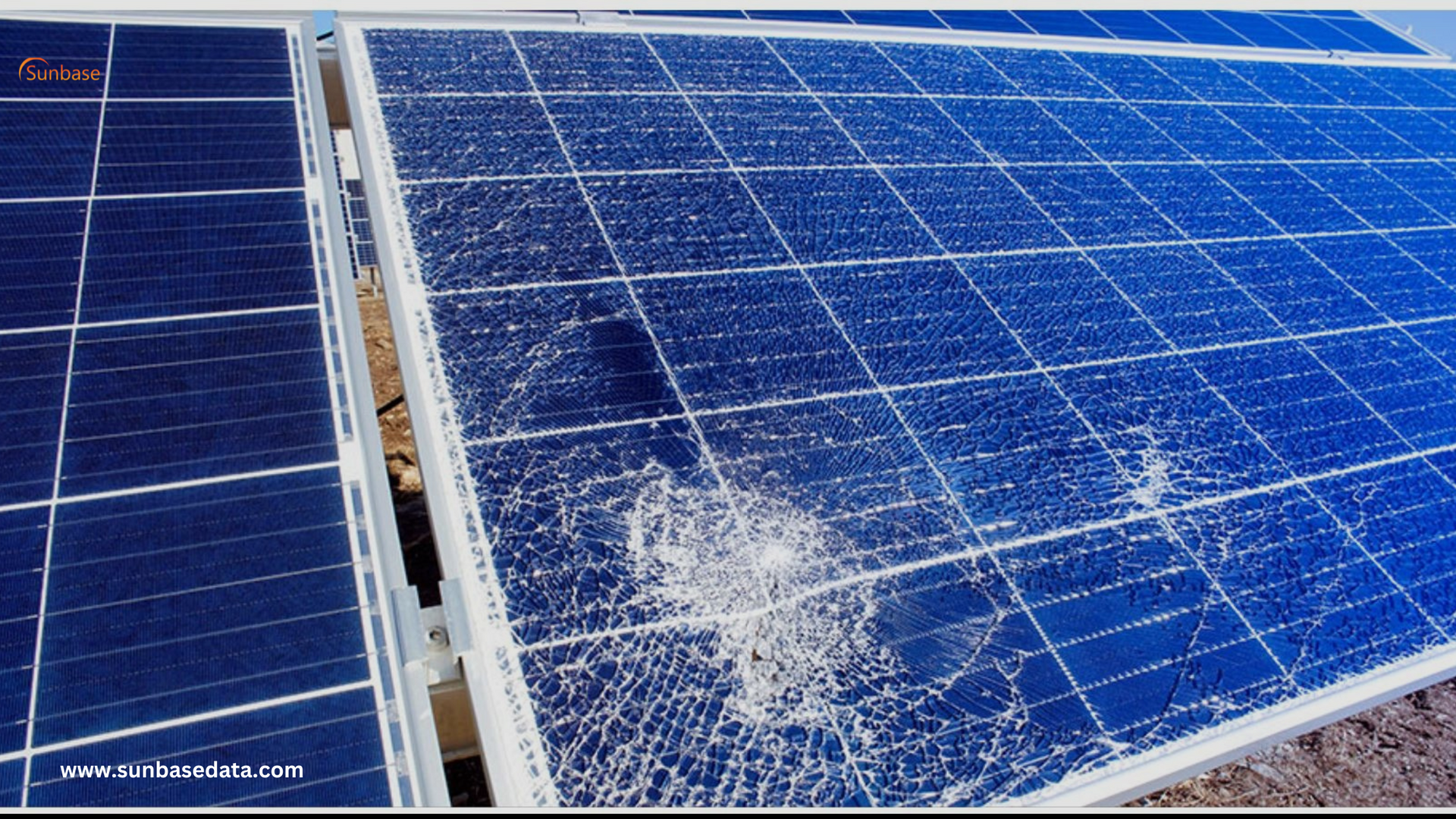
2. Floods
Floods flood the landscape with water, streets become rivers and homes become islands of despair.
Associated Risks
Structural Damage: Rising floodwaters can erode the foundations of solar panel installation, leading to long-term structural damage. This can compromise the stability and safety of the solar panel installation infrastructure.
Data Loss: Floods can damage data centers, resulting in the loss of critical operational data and hindering decision-making processes.
Operational Downturn: Water damage can disrupt solar power systems, leading to reduced energy output and halted operations. This can affect the overall efficiency and reliability of solar energy solutions used.
Asset Degradation: The National Renewable Energy Laboratory (NREL) reported that flooding contributed to a long-term degradation of 8 GW in U.S. solar assets.
Reputation Damage: Ineffective response to flooding can diminish customer confidence and harm your reputation as a reliable energy provider.
3. Heatwaves
Heatwaves push temps to extreme highs, the sun beats down relentlessly, and systems become overheated battlegrounds.

Associated Risks
System Overloads: Excessive heat can strain solar panels and electrical systems, reducing their efficiency and lifespan. This can lead to increased maintenance costs and potential system failures.
Heatwaves have significantly impacted the U.S. solar industry. Solar panel efficiency can decline by 0.3% to 1.5% for each degree Celsius above the optimal temperature of 25°C. A 5°C increase can lead to a 1% to 1.5% loss in energy generation.
Operational Downturn: High temperatures can lower solar power output, making it harder to meet energy demands during peak electricity usage-span.
Financial Losses: Increased maintenance costs and reduced power generation during heatwaves can affect financial stability and profitability.
Extreme heat causes project delays, with costs increasing by about 400,000 INR per megawatt for a one-month construction delay.
Reputation Damage: Consistent performance issues during heatwaves can tarnish your reputation for reliability and efficiency.
Want to overcome Solar Challenges? Read our blog: Overcoming Solar Project Challenges with Sunbase Solutions.
What are the Risk Mitigation Strategies Provided by Sunbase?
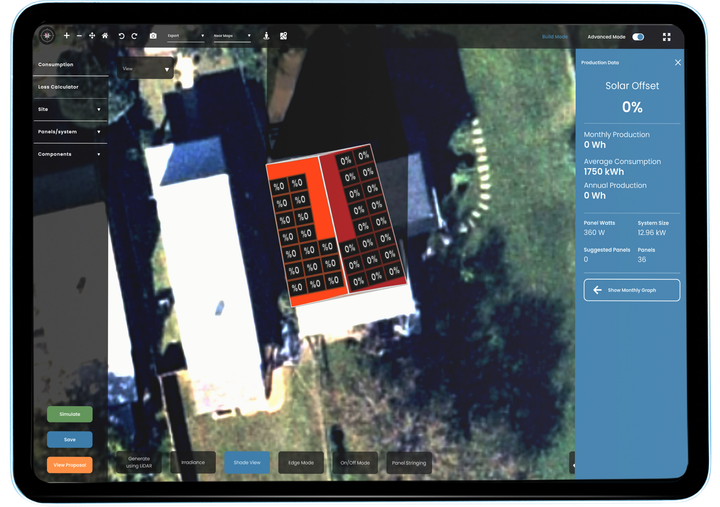
Sunbase offers advanced features and tools designed to mitigate risks related to extreme weather conditions, ensuring solar systems operate efficiently and reliably. Here’s a detailed look at these solar solutions and risk mitigation strategies:
1. Advanced Weather Forecast Integration
1.1. Predictive Analytics: Sunbase integrates with advanced weather forecasting tools to provide predictive analytics. This allows solar companies to anticipate severe weather and take proactive measures, such as adjusting panel angles or securing equipment. By predicting weather events, your business can avoid costly damages and repairs, allowing you to start saving.
1.2. Automated Alerts: The system sends automated alerts based on weather forecasts, giving operators time to secure equipment or adjust operations. This proactive approach ensures quick responses to weather threats, reducing potential damage and operational disruptions.
2. Robust Project Management
2.1. Contingency Planning: Sunbase’s project management tools help create detailed emergency plans to protect solar installations and quickly resume operations after bad weather. These plans minimize downtime and financial losses, ensuring continuous business operations and enhancing customer satisfaction.
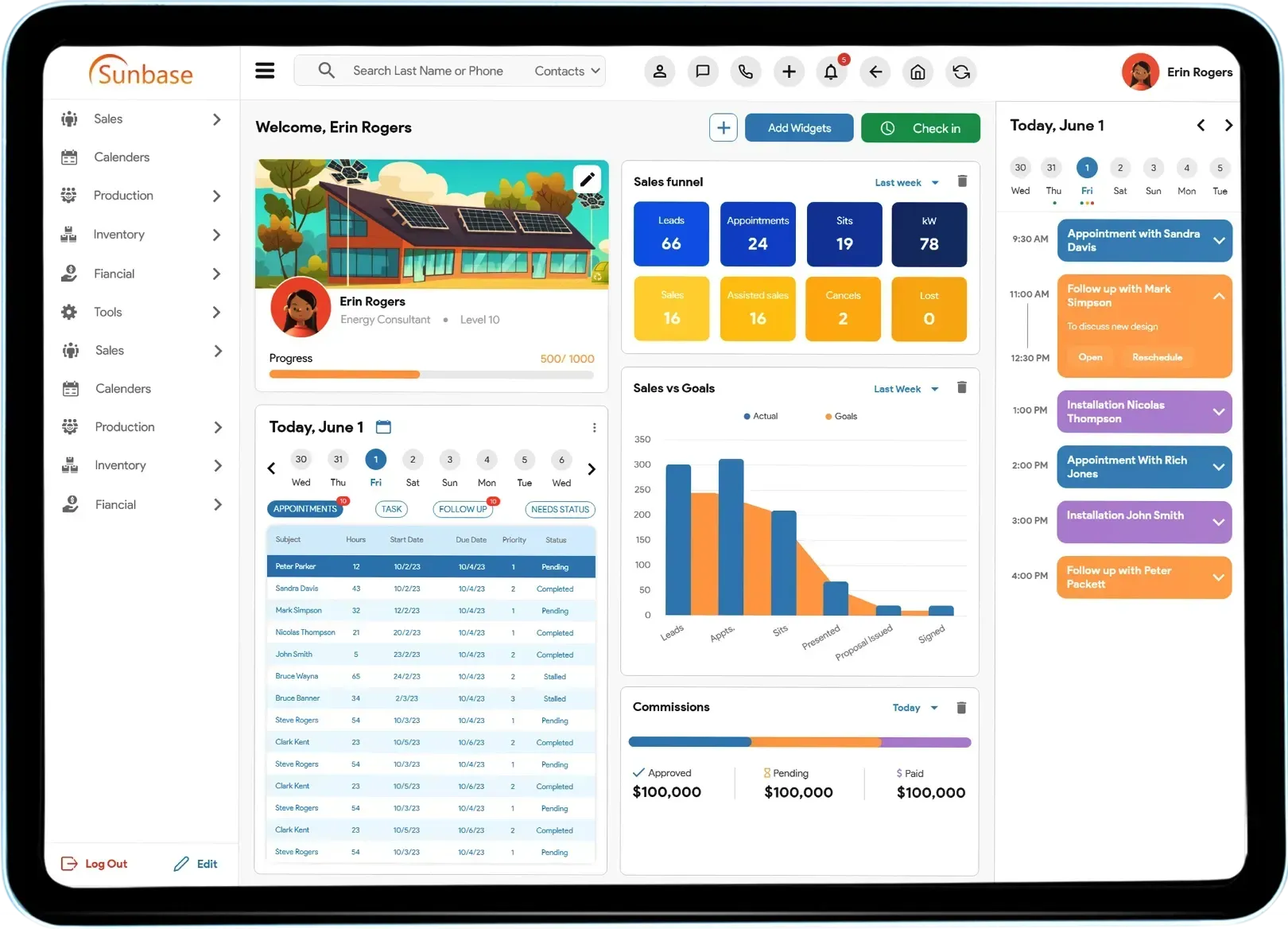
2.2. Resource Allocation: During extreme weather, Sunbase helps direct resources to the most critical areas first. This prioritization reduces downtime and operational disruptions, making sure the most important parts of the system are protected and maintained.
Read our blog: Construction Project Management Software
3. Real-Time Monitoring and Response
3.1. Real-time data: Real-time data allows immediate detection of issues caused by extreme weather, enabling quick fixes before problems escalate, thus ensuring business continuity.
3.2. Remote Control Capabilities: Operators can remotely control and adjust systems in response to weather conditions. This capability minimizes disruption and damage, maintaining operational continuity even during severe weather events.
4. Data Management and Protection
4.1. Cloud-Based Solutions: Sunbase stores essential data in the cloud, safeguarding it from local system failures due to severe weather. Cloud storage ensures data integrity and security and facilitates quick recovery after disruptions.
4.2. Backup Systems: Regular backups and disaster recovery plans protect valuable data and enable rapid restoration of normal operations after interruptions. These strategies safeguard business operations and allow for a swift recovery.
5. Structural Design Optimization
5.1. Durable Materials: Sunbase’s design software recommends using robust materials and construction methods that withstand extreme weather. This enhances the durability of solar installations, reducing the risk of damage and ensuring they endure severe conditions, which boosts customer satisfaction.
5.2. Optimal Placement: The software helps position and install solar panels in locations less exposed to severe weather. Proper placement minimizes the impact of adverse weather and maximizes energy production, helping businesses save on maintenance costs.
6. Financial Risk Management
6.1. Insurance Integration: Sunbase’s tools link to insurance data for risk assessments so all assets are covered for weather damage. This manages financial risks and the company gets the right insurance cover for the business.
6.2. Cost-Benefit Analysis: By knowing what’s needed and monitoring in real-time, Sunbase reduces the need for emergency repairs. This means big savings for your homeowners or business and gets you saving and stable fast.
7. Enhanced Communication
7.1. Stakeholder Updates: Sunbase ensures clear communication with customers, partners, and teams during extreme weather. This keeps everyone informed and maintains trust, managing expectations and ensuring awareness.
7.2. Customer Assurance: Providing reliable updates and maintaining service during adverse weather builds customer confidence and trust. Transparent communication reassures customers that their service provider is effectively managing the situation.
8. Training and Support
8.1. Staff Training: Sunbase offers regular training for staff on handling extreme weather situations and using its tools effectively. Well-trained staff can respond efficiently to emergencies, minimizing impact and ensuring swift recovery.
8.2. 24/7 Support: Sunbase’s support team is available around the clock to help resolve issues quickly. Continuous support ensures businesses can manage crises effectively and maintain smooth operations.
Conclusion
"The best defense against extreme weather is a plan that sees the future.”
Don’t let extreme weather catch you off guard. With Sunbase, transform potential disasters into manageable scenarios.
Install Sunbase to anticipate and conquer weather challenges. Start saving on costly repairs, enhance customer satisfaction, and stand out as an industry leader. Contact us today and secure your solar systems against the storm.
About Sunbase
Facing tornadoes, hurricanes, snowfalls, or heatwaves? Don’t stress—beat them all with Sunbase's Solar Design, Project Management etc! Install today to save, shine, and stay ahead. Contact us now!
Frequently Asked Questions
Q1. How do I prep my solar system for extreme weather?
Ans - Prepping your solar system means using advanced forecasting, having a plan B, and securing your gear. Regular maintenance, panel placement and data management will also keep your system up and running during extreme weather.
Q2. How do Sunbase’s weather forecasting tools give me an advantage in solar management?
Ans - Sunbase’s weather forecasting tools give you advanced predictions so you can see severe weather coming and prepare your system. This proactive approach protects your assets and puts you ahead of the competition by showing you’re better prepared and more reliable in managing extreme weather.
I agree to receive marketing messaging from Sunbase at the phone number provided above. I understand data rates will apply, and can reply STOP to OPT OUT.

